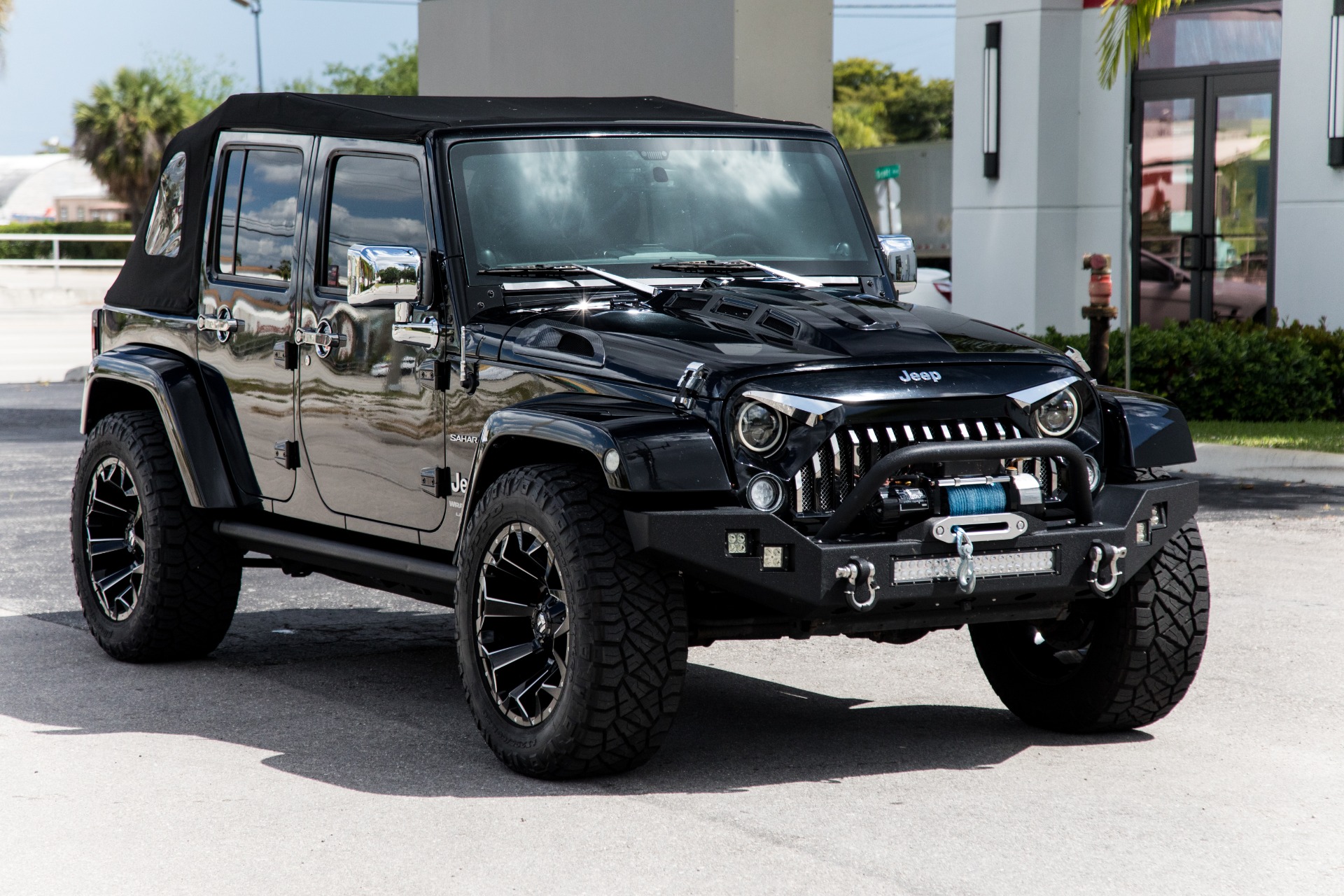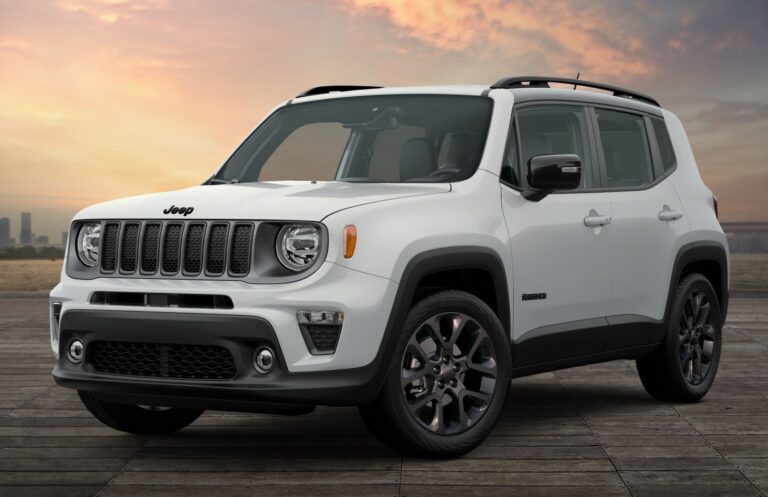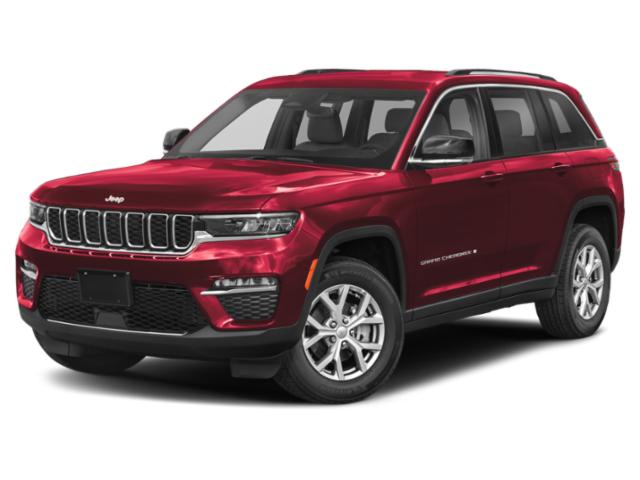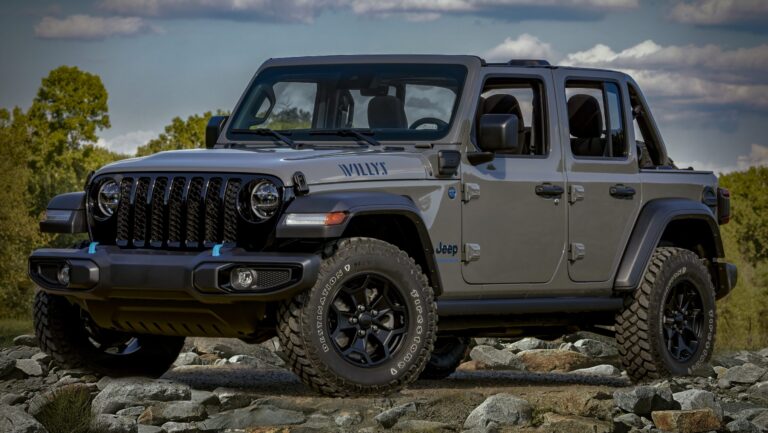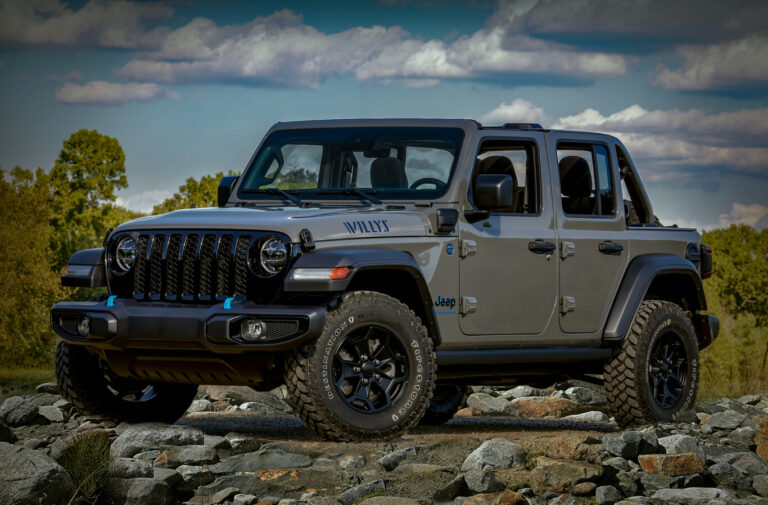Wrangler Jeep 1997: The Unsung Hero of Off-Road Evolution
Wrangler Jeep 1997: The Unsung Hero of Off-Road Evolution jeeps.truckstrend.com
The year 1997 marked a pivotal moment in the storied history of the Jeep Wrangler, ushering in a new era with the introduction of the TJ generation. Far more than just a model year, the 1997 Jeep Wrangler represented a significant leap forward in design, engineering, and ride quality, while still retaining the rugged, open-air spirit that had defined the brand for decades. It was the model that brought back the iconic round headlights, replaced the leaf springs with a coil-spring suspension, and in doing so, laid the groundwork for the modern Wrangler’s blend of off-road prowess and on-road comfort. For enthusiasts and casual drivers alike, the 1997 TJ is often hailed as one of the most balanced and beloved Wranglers ever produced, a true testament to Jeep’s ability to innovate while honoring its heritage.
The Dawn of a Legend: The TJ Generation’s Genesis
Wrangler Jeep 1997: The Unsung Hero of Off-Road Evolution
The 1997 Jeep Wrangler, internally coded as the "TJ," succeeded the YJ generation (1987-1995) after a brief hiatus in 1996. The transition from YJ to TJ was not merely a facelift; it was a fundamental re-engineering of the vehicle, driven by a desire to improve both its on-road manners and its legendary off-road capability.
The most visually striking change was the return of the classic round headlights, a move widely applauded by purists who had lamented the YJ’s square lamps. Beyond aesthetics, the TJ featured a wider stance, offering improved stability and a more aggressive appearance. However, the true revolution lay beneath the surface. Jeep engineers replaced the YJ’s leaf-spring suspension with an all-new Quadra-Coil suspension system, utilizing coil springs at all four corners. This radical departure from previous Wranglers dramatically improved ride comfort, reduced body roll, and significantly enhanced wheel articulation, making the TJ even more formidable on challenging terrain. The chassis was also stiffened, contributing to a more refined driving experience.
Under the Hood: Powertrains and Performance
The 1997 Wrangler TJ offered two robust engine options, both carried over from the YJ but refined for the new platform, providing a balance of power and reliability that contributed to the TJ’s enduring appeal:
- 2.5-liter AMC 150 I4 Engine: This inline-four cylinder engine produced 120 horsepower and 140 lb-ft of torque. While not a powerhouse, it was known for its durability and adequate performance for light-duty off-roading and city driving. It was typically paired with a 5-speed manual transmission (AX-5) or an optional 3-speed automatic (30RH).
- 4.0-liter AMC 242 I6 Engine: The undisputed workhorse of the Jeep lineup, this inline-six cylinder engine was beloved for its legendary reliability and ample torque. In 1997, it delivered 181 horsepower and a robust 222 lb-ft of torque. This engine truly came into its own off-road, providing the low-end grunt needed for crawling over obstacles. It was usually mated to a 5-speed manual transmission (AX-15 or NV3550 in later TJs) or an optional 3-speed automatic (32RH).
![]()
Both engines, particularly the 4.0L, are known for their longevity if properly maintained, often exceeding 200,000 miles. The transfer case was the venerable Command-Trac NV231 part-time 4WD system, offering 2WD High, 4WD High, and 4WD Low, ensuring true off-road capability.
Beyond the Engine: Key Features and Innovations
The 1997 Wrangler TJ was more than just a new suspension and engine options; it brought a host of improvements that made it a more refined and capable vehicle:
- Coil-Spring Suspension: As mentioned, this was the game-changer. It transformed the Wrangler’s ride from bouncy and stiff to surprisingly compliant, especially over uneven surfaces. Off-road, the increased articulation allowed the wheels to maintain better contact with the ground, enhancing traction and control.
- Updated Interior: While still utilitarian, the 1997 TJ’s interior was a notable upgrade from the YJ. It featured a more modern dashboard layout, improved ergonomics, and better quality materials. Practical elements like drain plugs in the floor (allowing for easy wash-outs) and removable doors remained core to the Wrangler experience. Air conditioning became more common, and a full-size spare tire was standard.
- Exterior Design: Beyond the round headlights, the TJ sported wider fenders, a more aggressive grille, and a slightly longer wheelbase (though the overall length remained similar to the YJ). The classic fold-down windshield and removable soft top or optional hardtop continued to define its open-air versatility.
- Improved Frame: The frame was redesigned to be stiffer and more robust, providing a better foundation for the new suspension and enhancing overall vehicle integrity.
- Safety Features: For its time, the 1997 TJ included basic safety features like dual front airbags (a first for the Wrangler), anti-lock brakes (optional), and improved seatbelts.


The 1997 Wrangler Experience: Driving and Owning
Driving a 1997 Jeep Wrangler, especially one equipped with the 4.0L engine, is a unique experience.
- On-Road Manners: Compared to its YJ predecessor, the TJ is significantly more comfortable for daily driving. The coil-spring suspension absorbs bumps much better, and the steering is more precise. However, it’s still a short-wheelbase, high-riding SUV, so expect some body roll in corners and a firm, truck-like ride compared to modern SUVs. Wind noise is present, especially with the soft top, but that’s part of the Wrangler charm.
- Off-Road Prowess: This is where the 1997 TJ truly shines. The combination of its short wheelbase, excellent approach and departure angles, ample ground clearance, and the highly articulate coil-spring suspension makes it an incredibly capable off-road machine right out of the factory. With the 4.0L engine’s torque and the low-range transfer case, it can tackle surprisingly challenging terrain.
- Modifiability: The TJ generation, including the 1997 model, boasts one of the largest and most diverse aftermarket support communities of any vehicle. From lift kits, larger tires, and heavy-duty bumpers to advanced lockers and axle upgrades, the possibilities for customization are virtually limitless. This makes the 1997 TJ an ideal platform for those who want to build a personalized off-road rig or simply enhance its capabilities.
Common Issues and Maintenance for a 1997 TJ
Owning a 27-year-old vehicle comes with its considerations. The 1997 Wrangler, while robust, is not immune to age-related issues:
- Rust: The biggest enemy of any older Wrangler. Inspect the frame (especially near the skid plate and control arm mounts), body mounts, floor pans, and rocker panels. Rust can compromise structural integrity.
- Oil Leaks: The 4.0L engine is famous for developing minor oil leaks, often from the valve cover gasket, oil filter adapter, or rear main seal. While common, they should be monitored.
- Cooling System: Overheating can be an issue if the cooling system isn’t well-maintained. Check the radiator, water pump, and thermostat.
- Steering Play: Worn steering components (ball joints, tie rod ends, steering box) can lead to loose steering.
- Electrical Gremlins: Minor electrical issues can arise with age, such as faulty sensors or dashboard lights.
- Transmission Issues: While generally robust, high mileage manual transmissions may exhibit worn synchros, and automatic transmissions can suffer from fluid leaks or shifting problems if not serviced.
Regular maintenance, including fluid changes, rust prevention, and addressing minor issues promptly, is crucial for keeping a 1997 TJ running strong.
Buying a 1997 Jeep Wrangler Today: What to Look For
If you’re considering purchasing a 1997 Jeep Wrangler, careful inspection is key:
- Frame Inspection: This is paramount. Get under the vehicle and thoroughly check the frame for rust, especially where the control arms attach and near the skid plate. Tap it with a hammer; a dull thud or flaking metal indicates deep rust.
- Body Rust: Check rocker panels, fenders, door hinges, and the floorboards.
- Engine Condition: Listen for unusual noises (knocks, ticks), check for excessive smoke from the exhaust, and look for fluid leaks. Check the oil and coolant levels and condition.
- Transmission & Transfer Case: Test drive to ensure smooth shifting in all gears (manual) or proper engagement (automatic). Engage 4WD high and low.
- Suspension & Steering: Look for worn bushings, cracked springs, or leaking shocks. Check for excessive play in the steering wheel.
- Soft Top/Hardtop: Inspect for tears, cracks, or missing hardware.
- Electricals: Test all lights, wipers, gauges, and the HVAC system.
- Documentation: Ask for maintenance records. A well-documented vehicle suggests a caring owner.
- Aftermarket Modifications: Be wary of poorly installed lift kits or extensive modifications that might hide underlying issues. Prefer a mostly stock vehicle unless you know the quality of the modifications.
Living with a Classic: Tips for Owners
Owning a 1997 TJ is more than just driving a car; it’s joining a community.
- Regular Maintenance: Adhere to a strict maintenance schedule. Fluids, filters, and preventative checks will save you money in the long run.
- Rust Prevention: Wash the underside regularly, especially if you live in a salted-road environment. Consider rust-proofing treatments.
- Join the Community: Online forums (like JeepForum.com or WranglerForum.com) and local Jeep clubs are invaluable resources for advice, parts, and camaraderie.
- Embrace the Open Air: Don’t forget the core reason you bought a Wrangler – take off the doors, fold down the windshield, and enjoy the freedom!
- Mod Wisely: If you plan to modify, research thoroughly and invest in quality parts.
Price Table: 1997 Jeep Wrangler (TJ) Estimated Market Values
Please note that these are estimates and actual prices can vary significantly based on location, mileage, specific options (e.g., 4.0L vs. 2.5L, automatic vs. manual, hardtop), maintenance history, and aftermarket modifications.
| Condition | Description | Estimated Price Range (USD) |
|---|---|---|
| Poor | Significant rust (frame, body), major mechanical issues (engine/transmission), non-functional systems, significant body damage, high mileage, requires substantial repair. | $3,000 – $6,000 |
| Fair | Visible rust (surface/some deeper), minor mechanical issues, some systems non-functional or unreliable, high mileage, needs moderate repairs/restoration. Driveable but not daily-driver reliable. | $6,500 – $9,500 |
| Good | Minimal rust (mostly surface), runs well with no major mechanical issues, all major systems functional, average mileage for its age, well-maintained with some signs of wear and tear, could be a reliable daily driver. | $10,000 – $14,000 |
| Excellent | Little to no rust, pristine frame, strong engine and transmission, all systems fully functional, low mileage for its age, meticulously maintained, often with desirable factory options or tasteful, high-quality modifications. Collectible condition. | $15,000 – $25,000+ |
Note: Heavily modified or custom-built Wranglers can exceed these ranges significantly.
Frequently Asked Questions (FAQ) about the 1997 Jeep Wrangler
Q1: Is the 1997 Jeep Wrangler reliable?
A1: Yes, generally. The 4.0L inline-six engine is legendary for its reliability and longevity if properly maintained. The rest of the drivetrain is also robust. However, like any vehicle approaching 30 years old, components will wear out and require maintenance.
Q2: What are the most common rust spots on a 1997 TJ?
A2: The frame is the most critical area, especially near the control arm mounts and the skid plate. Also check the rocker panels, floorboards, body mounts, and the area around the rear bumper and gas tank skid plate.
Q3: Which engine is better: the 2.5L or the 4.0L?
A3: For most users, the 4.0L inline-six is highly recommended due to its significantly higher horsepower and torque, which makes it much more capable on the highway and off-road. The 2.5L is adequate for light use but can feel underpowered.
Q4: Is the 1997 TJ good for daily driving?
A4: Compared to its predecessors (YJ/CJ), the 1997 TJ offers a much more comfortable ride due to its coil-spring suspension. It can certainly be a daily driver, but be aware of its truck-like handling, higher fuel consumption, and increased wind noise compared to modern vehicles.
Q5: Can I remove the doors and fold down the windshield on a 1997 Wrangler?
A5: Absolutely! This is a defining feature of the Wrangler. The doors are designed to be easily removed (though check local laws regarding mirror requirements), and the windshield can be folded down for an ultimate open-air experience.
Q6: What’s the main difference between the 1997 TJ and the older YJ?
A6: The most significant differences are the return of round headlights on the TJ and, critically, the switch from leaf-spring suspension on the YJ to coil-spring suspension on the TJ. This drastically improved the TJ’s ride comfort and off-road articulation. The TJ also had a more refined interior and frame.
Q7: What kind of fuel economy can I expect from a 1997 Wrangler?
A7: Fuel economy is not a strong suit. Expect around 15-18 MPG combined for the 4.0L engine and slightly better for the 2.5L (perhaps 17-20 MPG), depending on driving style, tire size, and modifications.
Q8: Are parts readily available for the 1997 TJ?
A8: Yes, parts availability is excellent. Given the TJ’s popularity and longevity (produced from 1997-2006), both OEM and aftermarket parts are widely available from numerous suppliers.
Conclusion
The 1997 Jeep Wrangler stands as a monumental achievement in the evolution of the iconic off-roader. By boldly introducing the Quadra-Coil suspension and re-embracing its classic round headlight aesthetic, the TJ generation—spearheaded by the ’97 model—successfully blended the raw, adventurous spirit of its ancestors with newfound levels of comfort and refinement. It struck a near-perfect balance, becoming a highly desirable platform for both dedicated off-road enthusiasts and those simply seeking a unique, open-air driving experience. For anyone looking to own a piece of automotive history that remains immensely capable and endlessly customizable, the 1997 Jeep Wrangler is not just a vehicle; it’s an invitation to adventure, a testament to enduring design, and a true legend in its own right. Its legacy continues to shape the Wrangler’s identity, proving that sometimes, the best way forward is to embrace the past while fearlessly innovating for the future.
